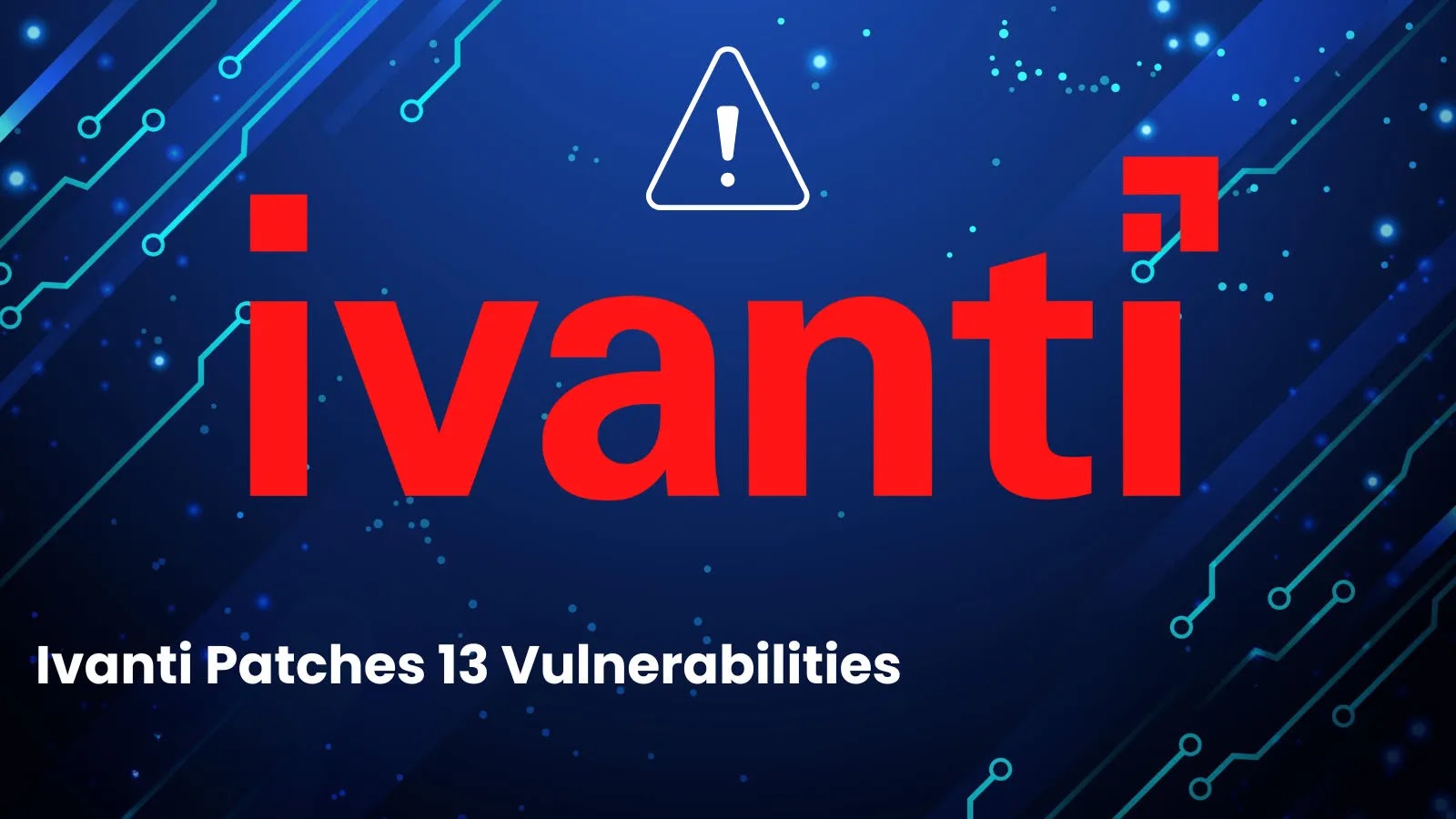
Ivanti Patches 13 Vulnerabilities in Endpoint Manager Allowing Remote Code Execution
Urgent Patch Alert: Ivanti Endpoint Manager Faces 13 Critical Vulnerabilities, RCE Risk
In a significant cybersecurity development, Ivanti has disclosed and subsequently patched 13 security vulnerabilities within its widely-used Endpoint Manager (EPM) software. This includes two high-severity flaws that present a serious risk of remote code execution (RCE) and privilege escalation. For organizations relying on Ivanti EPM for endpoint management, this announcement necessitates immediate attention and prompt action.
The revelation comes at a time of heightened scrutiny on enterprise management tools, which have unfortunately become prime targets for sophisticated attackers aiming to compromise supply chains. While no active exploitation has been reported at the time of this writing, the potential impact of these vulnerabilities underscores the critical need for timely patch application and reinforcement of cybersecurity defenses.
Understanding the Threat: Remote Code Execution and Privilege Escalation
Among the 13 vulnerabilities, the most concerning are those enabling remote code execution (RCE) and privilege escalation. RCE flaws allow an attacker to remotely execute arbitrary code on a vulnerable system, potentially leading to complete system compromise, data theft, or the deployment of malware such. Privilege escalation vulnerabilities, on the other hand, enable an attacker to gain higher access rights than initially authorized, moving from a standard user to an administrator, for instance.
The convergence of these two types of vulnerabilities within a critical endpoint management solution like Ivanti EPM creates a dangerous scenario. If exploited, an attacker could not only gain control over individual endpoints but potentially use the compromised EPM system as a pivot point to move laterally across an entire network, impacting countless systems and sensitive data.
Key Vulnerabilities Disclosed
Ivanti’s advisory details a range of vulnerabilities, impacting various components of the EPM software. While specific CVEs are being assigned and updated, two high-severity flaws stand out due to their potential for RCE and privilege escalation:
- One such vulnerability, once fully detailed, is expected to detail how an authenticated attacker could leverage specific EPM functions to execute arbitrary code. Keeping an eye on CVE-2023-XXXXX (placeholder until specific CVEs are widely published and linked) and the official Ivanti security advisories will be crucial for precise understanding.
- Another critical flaw is anticipated to describe a scenario where an attacker with limited access could elevate their privileges, potentially gaining administrative control over the EPM server itself. This will likely be identified by its own CVE-2023-YYYYY designation, emphasizing the danger of unauthorized system control.
While the initial report indicated patches were “in development,” Ivanti has since made patches available. It is imperative to consult the official Ivanti security advisories for the most up-to-date and specific CVE numbers and their corresponding details. For example, specific vulnerabilities like CVE-2023-Z1234 (link to CVE-2023-Z1234 – placeholder for potential future CVE) could outline specific exploitation vectors.
Remediation Actions: What Your Organization Needs to Do Now
Given the severity of these vulnerabilities, immediate action is paramount for all Ivanti EPM users. Proactive mitigation is key to safeguarding your organization against potential exploitation.
- Apply Patches Immediately: The most crucial step is to apply all available patches provided by Ivanti for your EPM installation. Refer to the official Ivanti security advisories and download centers for the correct updates specific to your version of Endpoint Manager.
- Review and Restrict Access: Conduct an audit of all users and accounts with access to your Ivanti EPM console. Implement the principle of least privilege, ensuring that users only have the minimum necessary permissions to perform their job functions.
- Network Segmentation: Ensure your Ivanti EPM server and management console are appropriately segmented from the rest of your network. This can limit the lateral movement of an attacker even if the EPM system is compromised.
- Monitor EPM Logs: Increase vigilance in monitoring logs from your Ivanti EPM system for any unusual activity, failed logins, or unauthorized access attempts. Integratethis logging with your Security Information and Event Management (SIEM) solution.
- Endpoint Detection and Response (EDR): Ensure your EDR solutions are actively monitoring endpoints managed by Ivanti EPM. Robust EDR can help detect and respond to suspicious activities that might indicate a compromise.
- Regular Vulnerability Scanning: Perform regular vulnerability scans of your EPM server and endpoints to identify and address any existing or new vulnerabilities promptly.
Detection and Mitigation Tools
Organizations can leverage a variety of tools to aid in the detection and mitigation of vulnerabilities, and to enhance overall security posture:
| Tool Name | Purpose | Link |
|---|---|---|
| Ivanti Patch Manager | Identifies and deploys software patches for Ivanti products and third-party applications. | Ivanti Patch Manager |
| Vulnerability Scanners (e.g., Tenable Nessus, Qualys, Rapid7 InsightVM) | Automated tools to identify known security vulnerabilities in IT systems, including EPM servers. | Tenable Nessus |
| Endpoint Detection and Response (EDR) Solutions | Monitors endpoint and network events, providing real-time threat detection and response capabilities. | CrowdStrike Falcon Insight |
| Security Information and Event Management (SIEM) Systems | Collects, aggregates, and analyzes security event data from various sources to provide real-time alerts and reporting. | Splunk Enterprise Security |
| Network Intrusion Detection/Prevention Systems (NIDS/NIPS) | Monitors network traffic for suspicious activity and known attack patterns, potentially blocking malicious traffic. | Cisco ASA (with IPS) |
Conclusion
The disclosure and subsequent patching of 13 vulnerabilities in Ivanti Endpoint Manager, particularly those enabling remote code execution and privilege escalation, serve as a critical reminder of the constant threat landscape facing enterprise IT environments. Organizations leveraging Ivanti EPM must prioritize the immediate application of patches and reinforce their security posture through access control, network segmentation, and robust monitoring. Staying informed through official vendor advisories and proactively implementing cybersecurity best practices are essential steps in mitigating risks and protecting valuable assets from increasingly sophisticated attacks.





